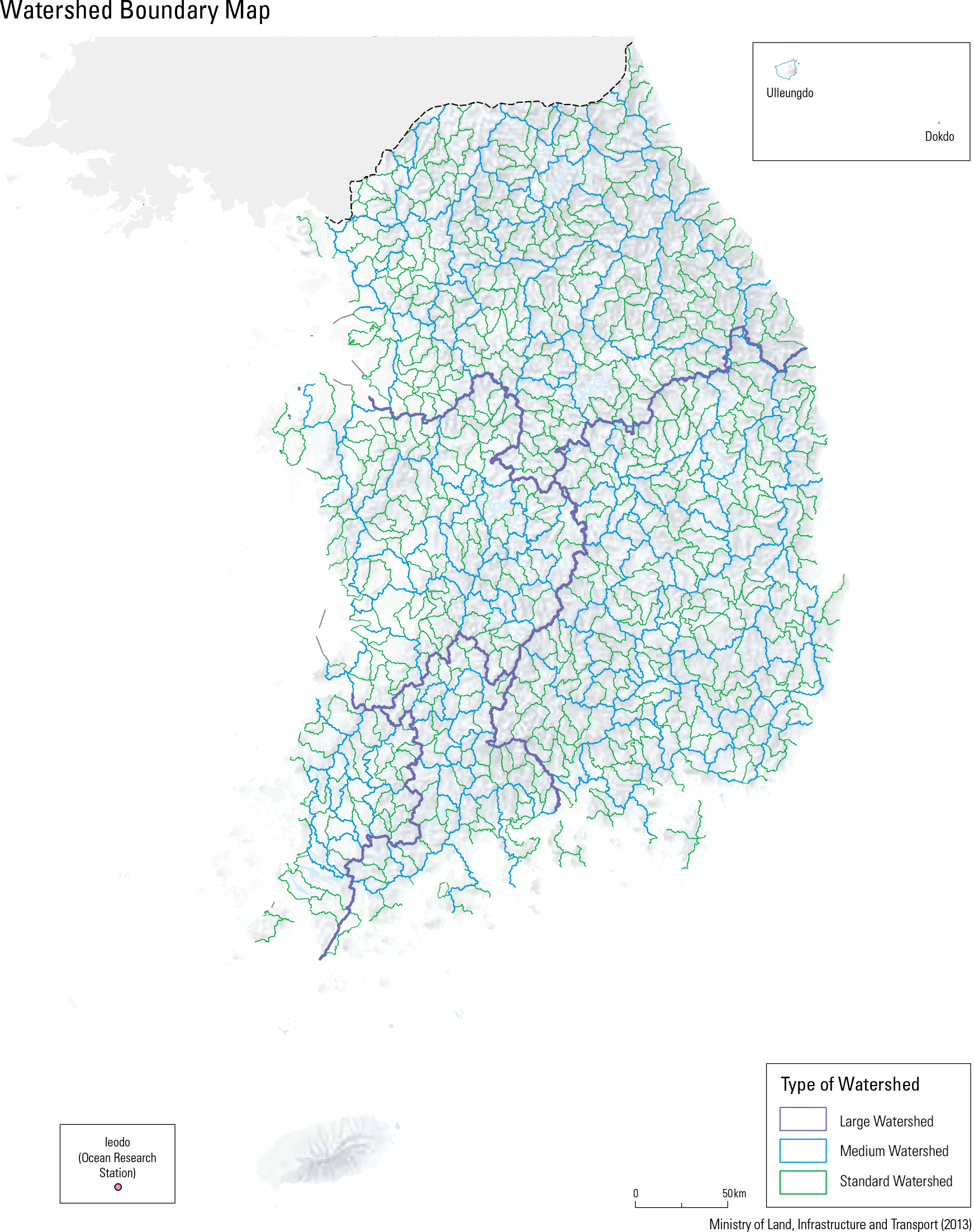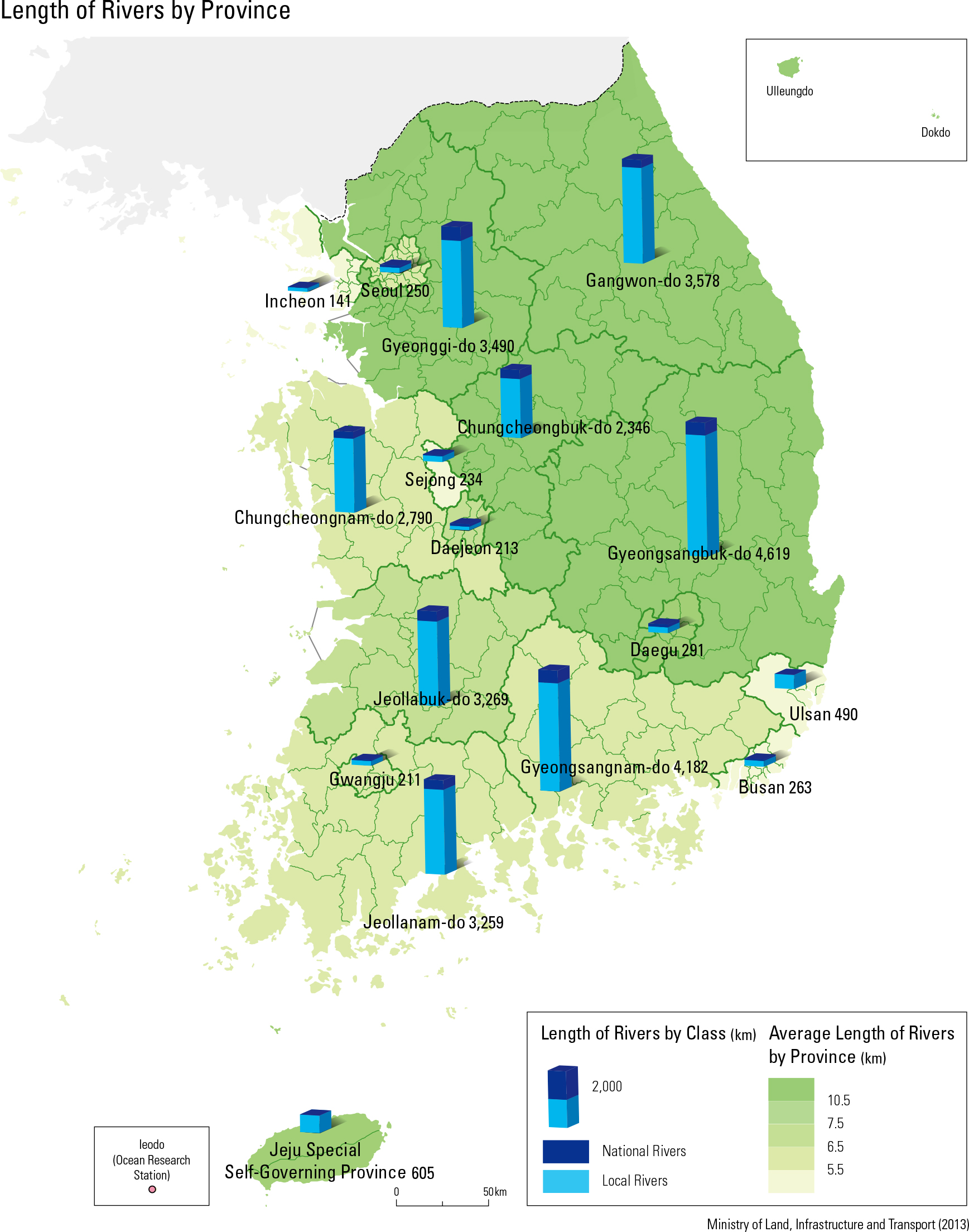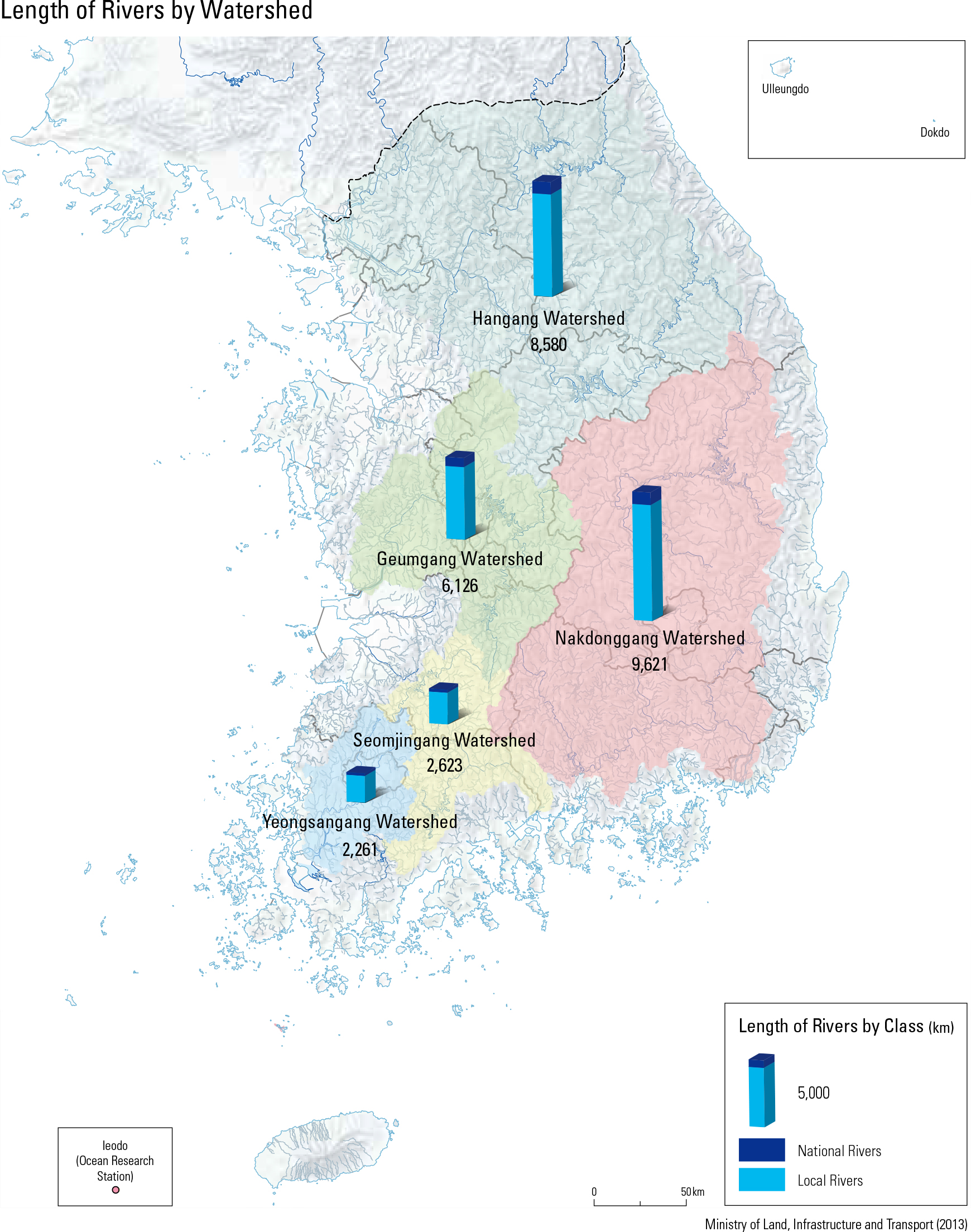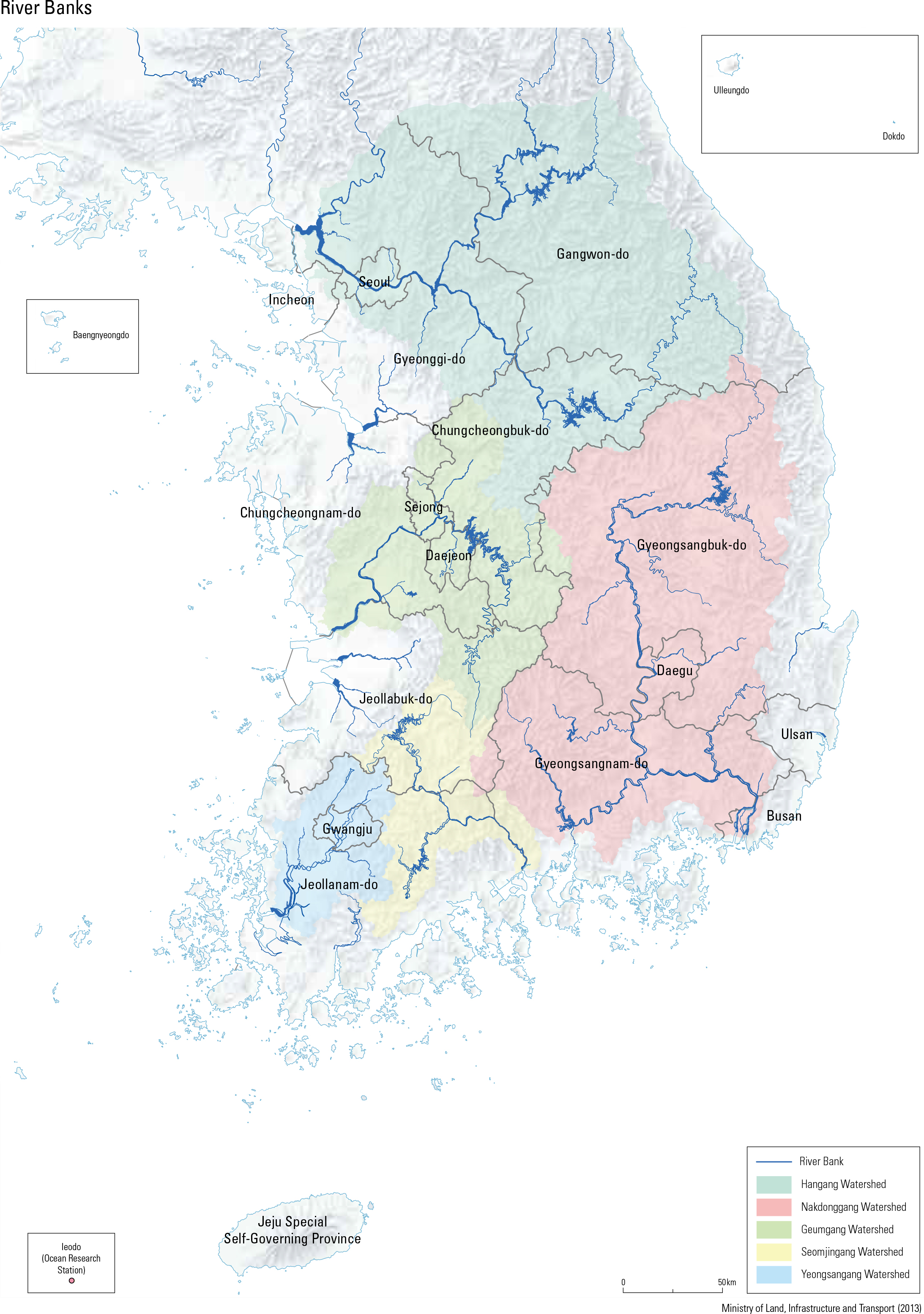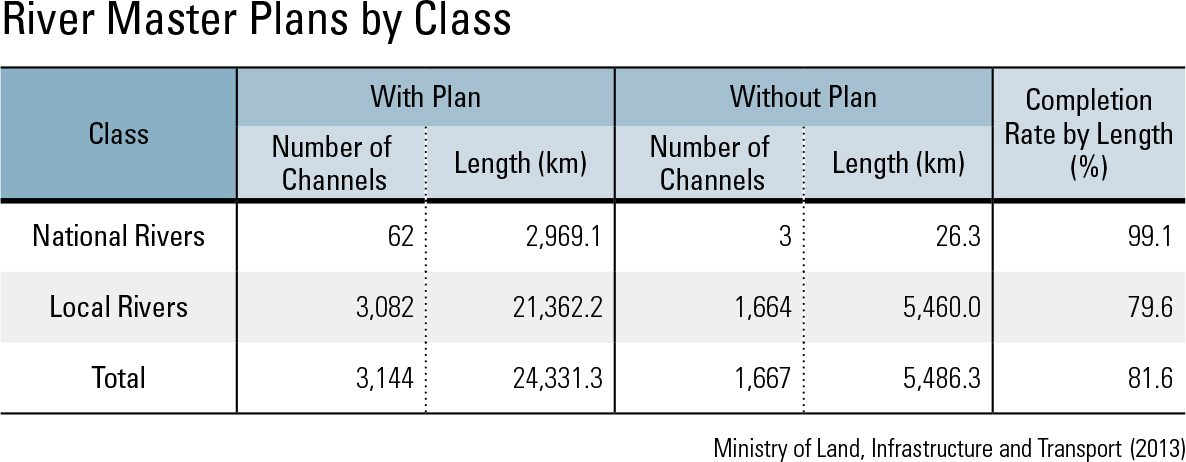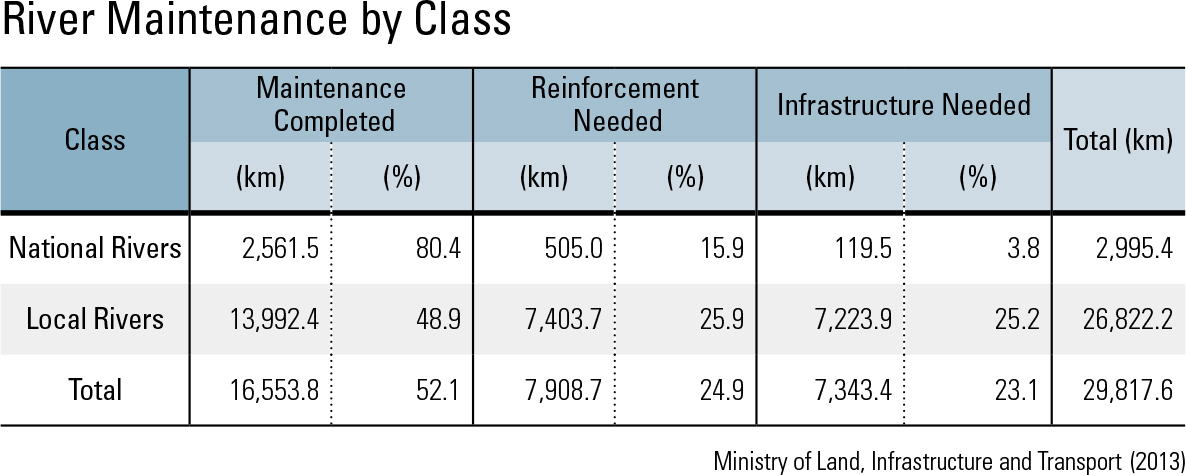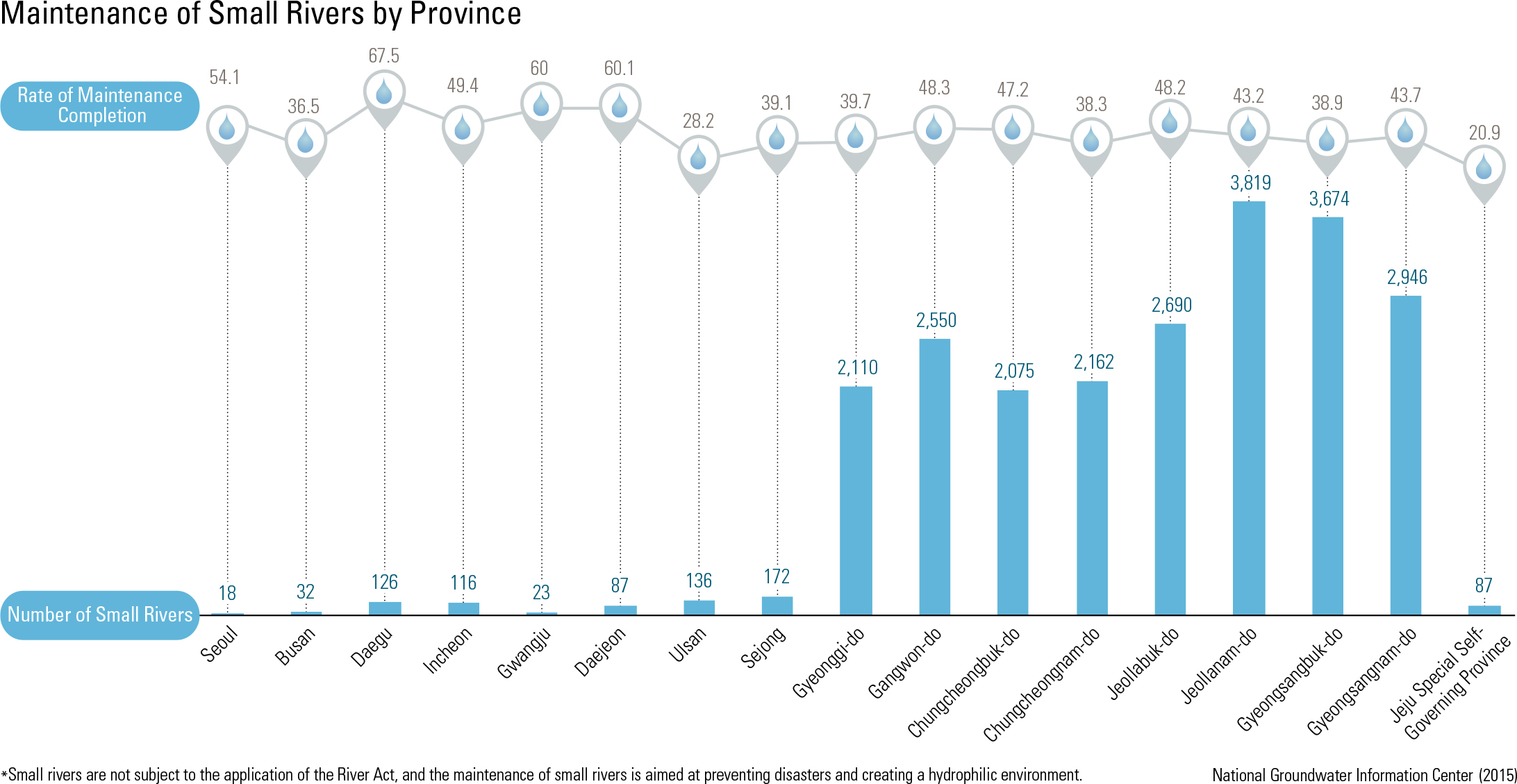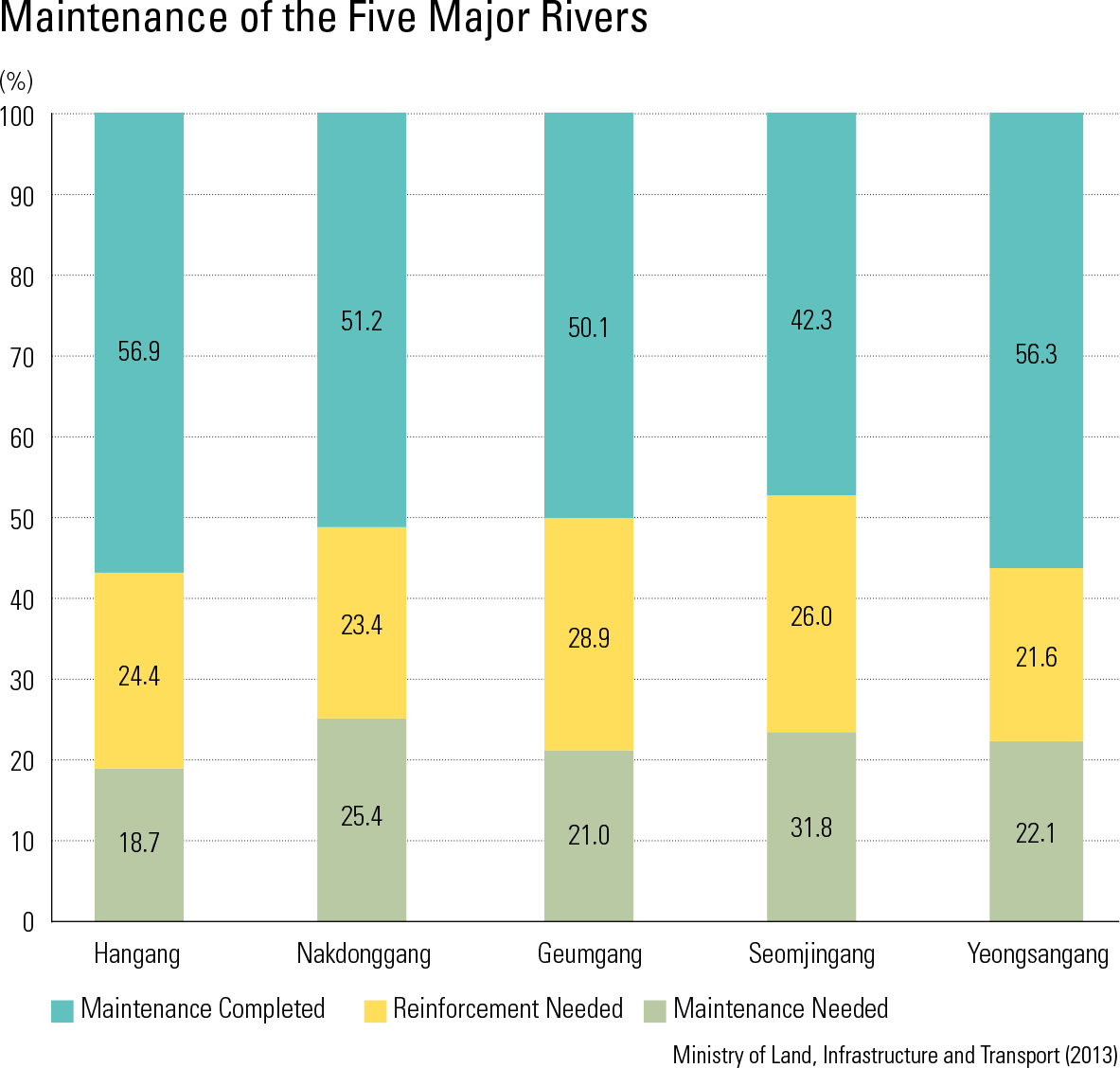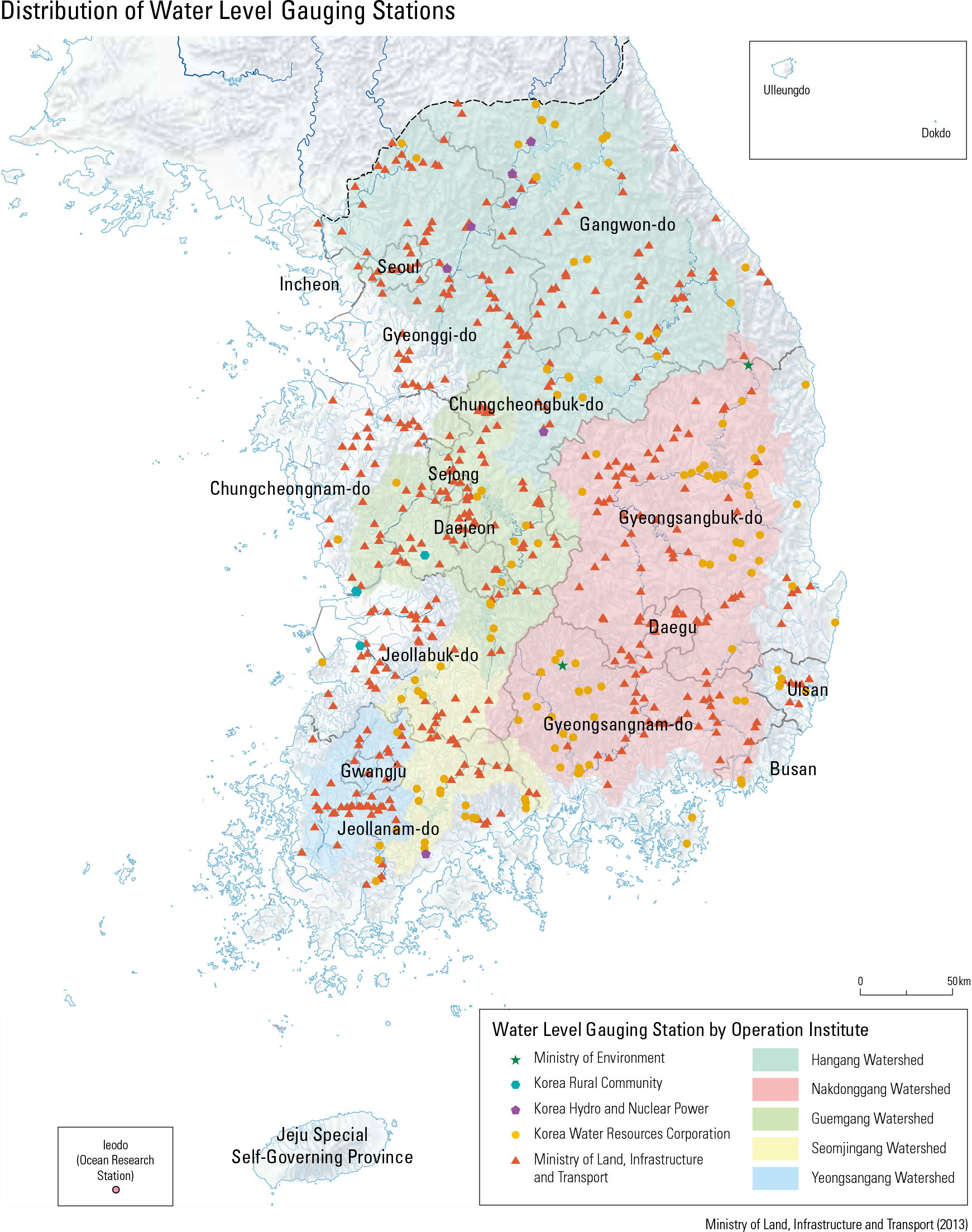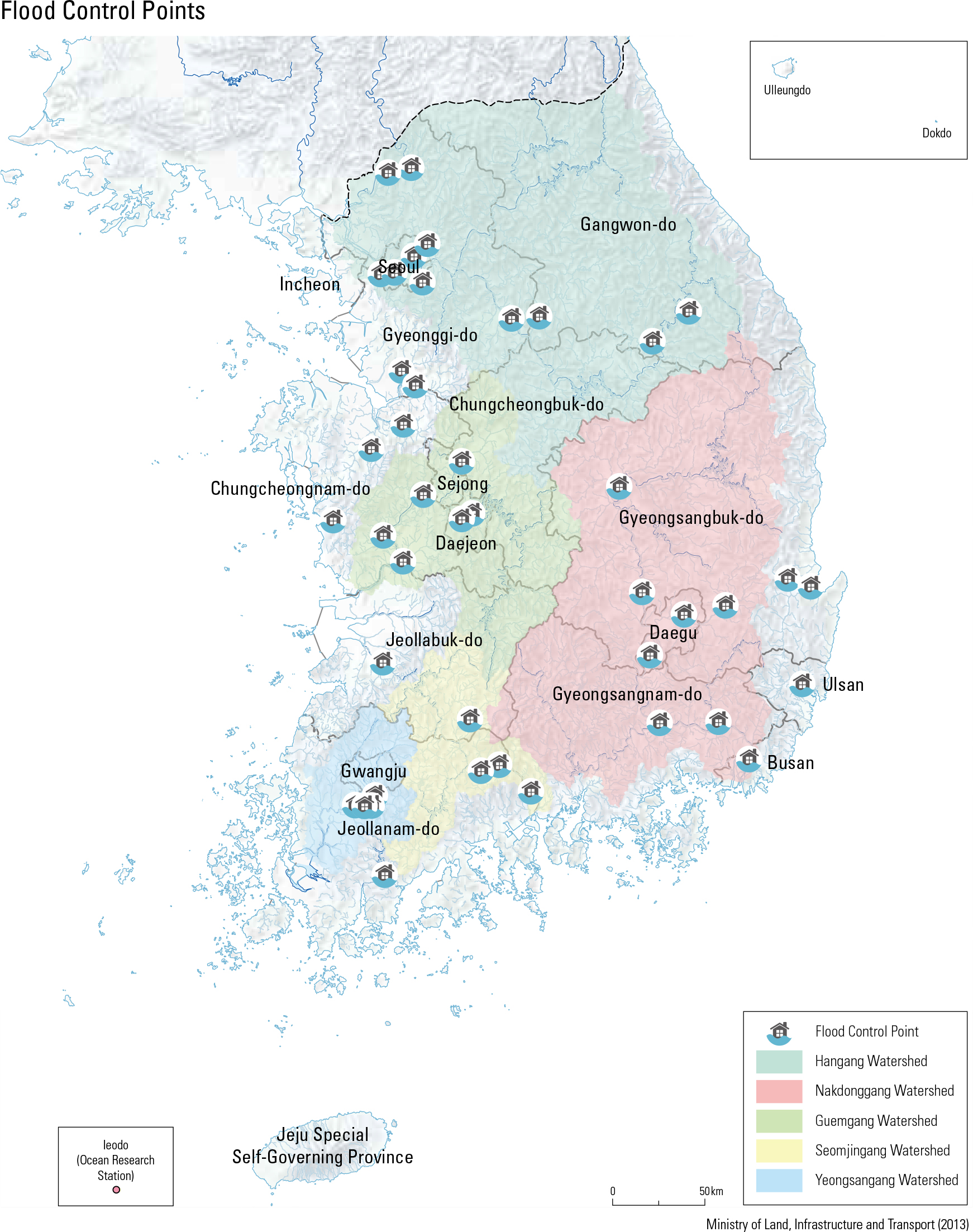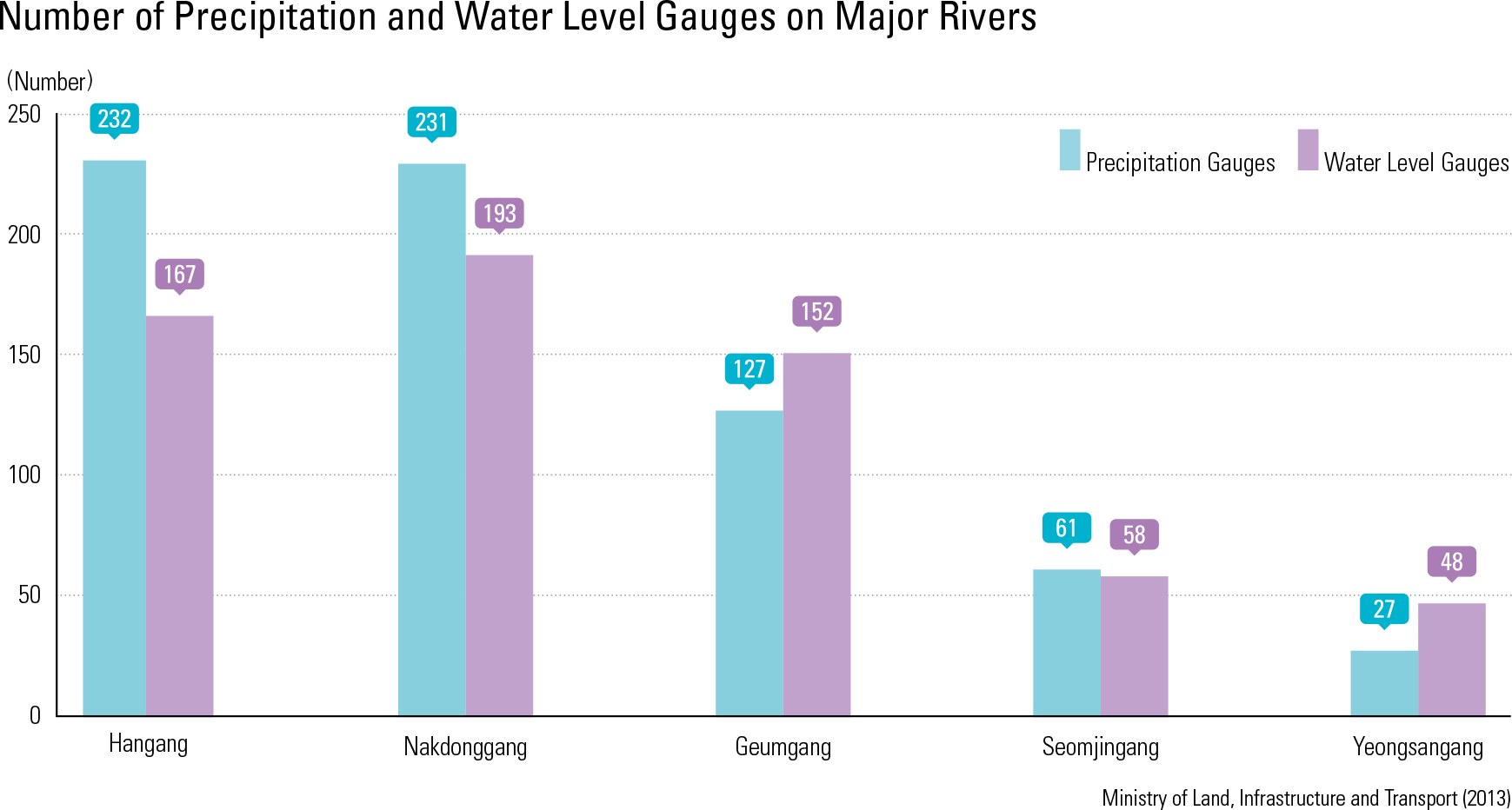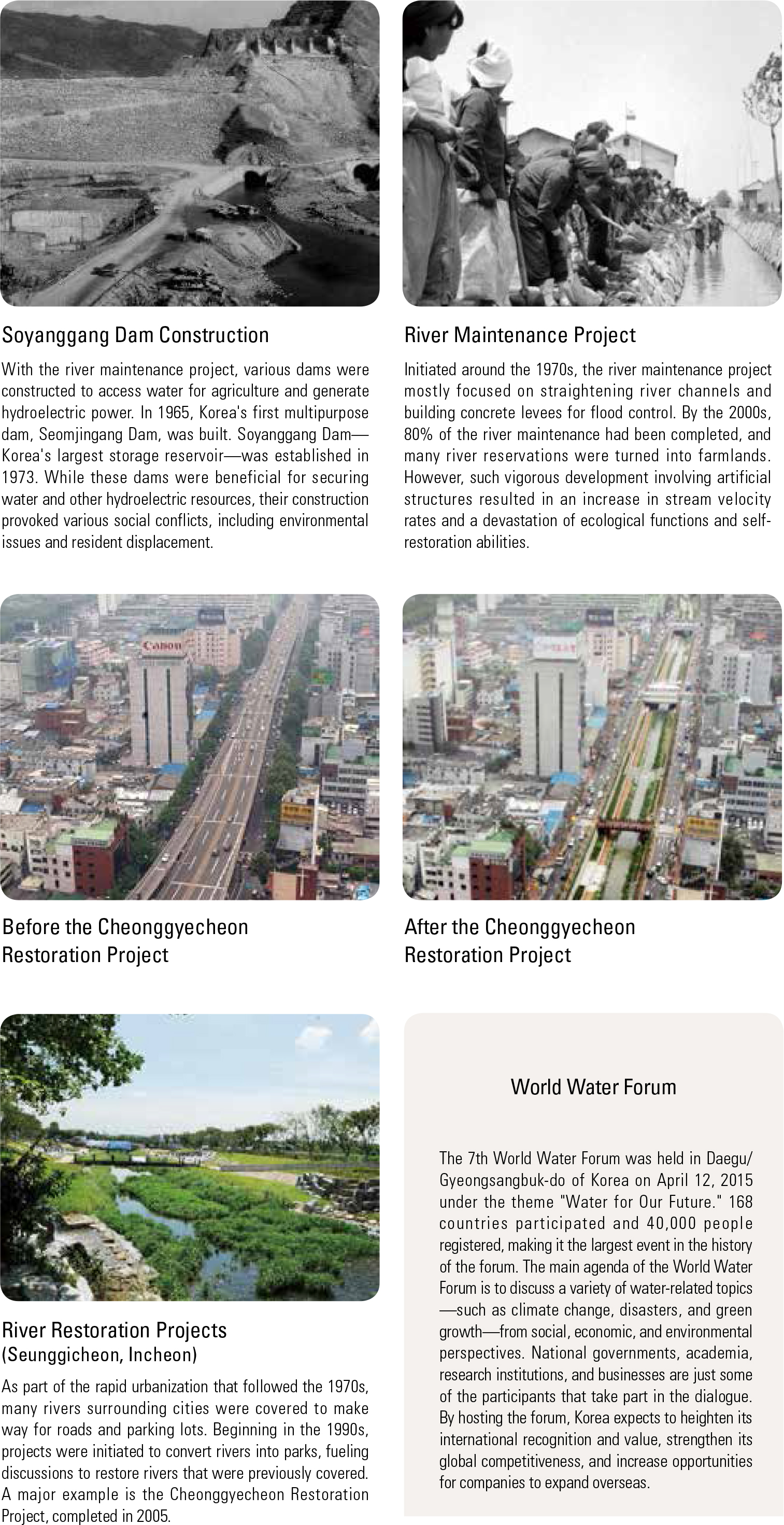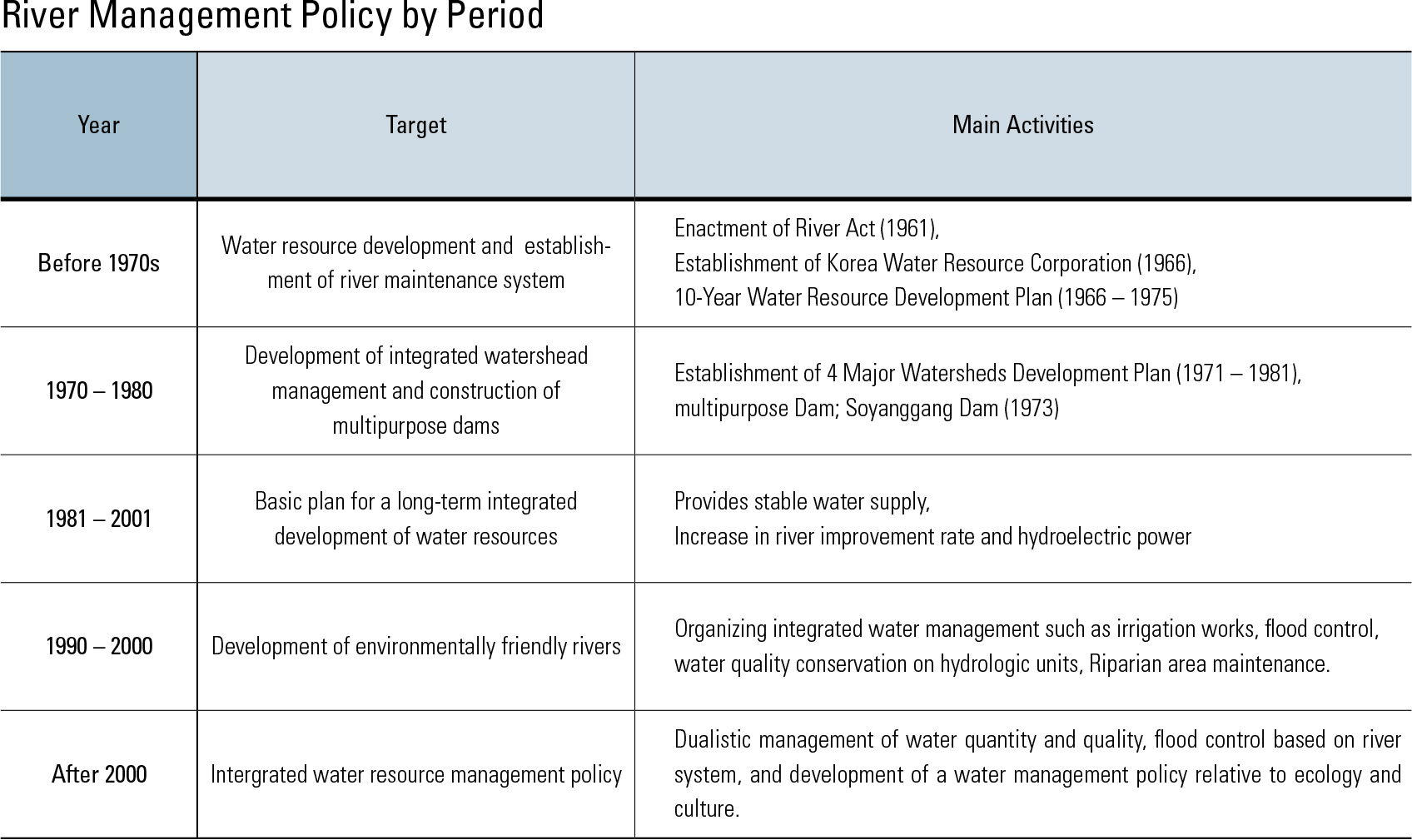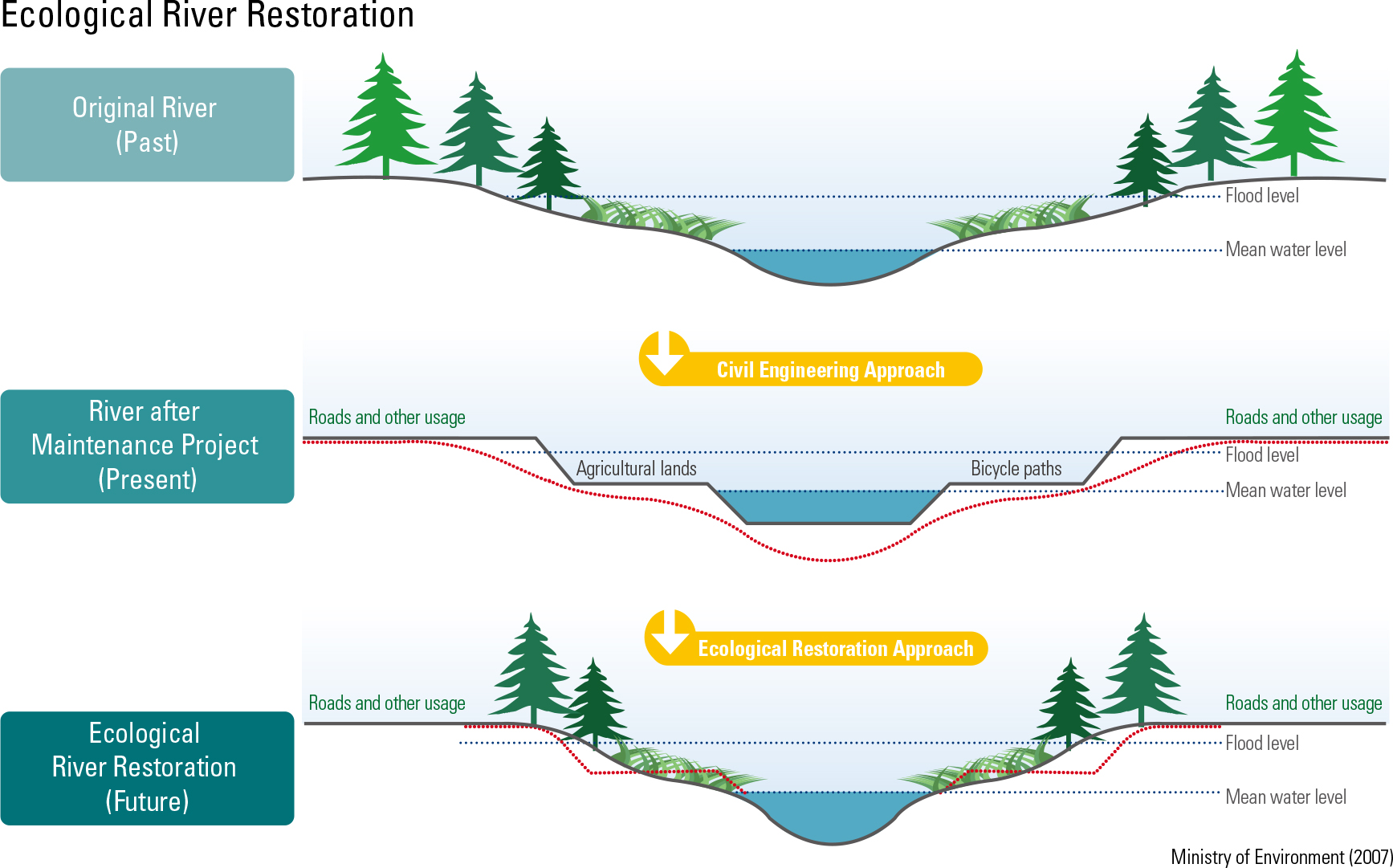English II
Based on watershed area, the 10 largest rivers in South Korea are Hangang, Nakdonggang, Ge- umgang, Seomjingang, Yeongsangang, Anseongc- heon, Sapgyocheon, Mangyeonggang, Hyeongsan- gang, and Dongjingang. The Hangang watershed is the largest in terms of area and volume; it has a drainage area of 25,953 km2 and a volume of 17.4 billion m3. Nakdonggang is the longest river, with a length of 510 km. The Seomjingang watershed has the highest average precipitation of 1,457 mm, while the Hyeongsangang watershed has the lowest annual precipitation of 1,157 mm. Rivers in Korea are divided into two categories: legally designated rivers and small rivers. Legally designated rivers encompass both national and local rivers, while small rivers are designated by the Small River Maintenance Act. National rivers are relative- ly larger bodies that are important for environmental conservation and the economy of the country. Some examples include upper stream rivers affected by drainage from reservoirs, lower stream rivers locat- ed downstream from multipurpose dams, and rivers that flow through densely populated or protected areas. Local rivers are often relevant with public use and are managed by regional governments.
page_2 |
